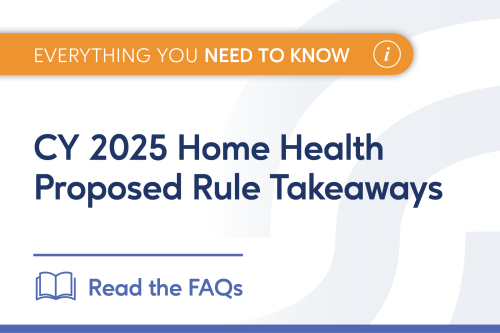Overcoming Challenges in Home Health: Insights from SimiTree’s Webinar on Home Health Proposed Rule 2025

Navigating the complexities of home health regulations can be overwhelming. With the recently released Home Health Proposed Rule 2025, many agencies are concerned about how these changes will impact their financial health and operational efficiency. To help you understand and prepare for these changes, we hosted an insightful webinar on July 2, 2024, featuring industry experts Brian Harris, Vice President of Financial Consulting, and J’non Griffin, RN, MHA, HCSD, HCSH, HCSC, HCSO, COSC, Senior Vice President Compliance & Coding. This session provided a detailed overview of the proposed rule and its potential impact on home health agencies.
Key Topics Covered:
- Decrease in Medicare Home Health Spending: An estimated reduction of 1.7%, equating to $280 million.
- PDGM Recalibrations: Adjustments to case-mix weights and wage indexes.
- New Measures for CY 2027 HH QRP: Inclusion of additional quality reporting measures.
- Expanded Home Health Value-Based Purchasing Model RFI: Requests for information on expanding the model.
- Updates to the Conditions of Participation: Revisions to the current standards.
During the webinar, we engaged with participants to understand their thoughts on offsetting the impending rate cuts and their impact on margins. The two most common responses highlighted the importance of increasing QA for coding/OASIS to optimize case mix scores and strategies for succeeding with a diversified payor mix.
Watch the Webinar On-Demand
Missed the live session? No worries! You can watch the webinar on-demand by visiting our webinars page and locating it under the ‘Consulting’ section.
Reach Out for Assistance
We know that changes in regulations can create uncertainty and concern. If you have any questions or need personalized support regarding the Home Health Proposed Rule 2025, our team is here to help. Visit our Coding and OASIS pages for more information on optimizing your case mix scores.
We are committed to helping you navigate these changes smoothly and effectively. Reach out to us to ensure your agency is well-prepared and can continue to provide exceptional care.
Frequently Asked Questions (FAQs) from the Webinar
Q: Is physical therapy necessary for patients with ambulation below 3?
A: Not necessarily. Ambulation level alone shouldn’t decide therapy needs. Individualized assessment is crucial.
Q: The number of elderly people is increasing nationally, but the number of beneficiaries seems to be reducing year over year. Why?
A: There could be multiple reasons. More use of mobile physicians, hospice care, or outpatient treatment could be a factor. Staffing shortages might also play a role.
Q: What “unique beneficiaries” are mentioned regarding beneficiary reduction?
A: Each unique patient is counted only once, even if admitted multiple times in a year.
Q: Will social determinants of health (SDoH) data affect reimbursement through CMS?
A: We don’t know for sure yet. If SDoH is included in VBP (Value-Based Purchasing), it likely will influence reimbursement.
Q: When is the deadline to submit OASIS data for CMS (assuming this is for Medicare/Medicaid patients)?
A: Voluntary submission of OASIS data for non-Medicare/Medicaid patients to CMS starts January 1st, 2025. It becomes mandatory on July 1st.
Q: Has CMS updated the average minutes per discipline used to calculate cost per unit for cost per episode?
A: Not to our knowledge, as we did not see any indication of this in the proposed rule. We’ll keep an eye out for updates.
Q: During COVID, rehab therapists could initiate care when a registered nurse (RN) ordered it. Is this still allowed?
A: No, the RN should do the initial assessment now. Once the COVID allowances were lifted, this CoP went back to the RN doing the initial assessment.
Q: What program shows anticipated patient visits per discipline?
A: SimiTree offers a program called Compass that utilizes claims data for utilization comparisons.
Q: Is there a national acuity scoring system for home health patients to use with the COP (Conditions of Participation) regarding accepting patients?
A: Not that we’re aware of. There might be agency-specific systems.
Q: How will the COP policy regarding accepting patients work?
A: We’re waiting for clearer information on the COP policy, too. The details about what kind of patients agencies can accept are still unclear. We know we need to give our ability to staff cases to the discharge planners on admission, along with their access to our outcomes. We believe you will need a policy around the admission or declination of a patient, based on staffing, skills, and disciplines, and that policy will be monitored during survey to see if care was appropriately taken.
Q: How can we improve our 48-hour admissions if there’s a staffing shortage?
A: Effective communication is essential. If CoPs (Community Paramedics/Other Providers) are unable to accept and see the patient within the designated timeframe, they should refer the patient to an alternative resource that can accommodate them.
For more details, visit our website or contact us with any questions or concerns. We look forward to supporting your home health agency through these regulatory changes.

